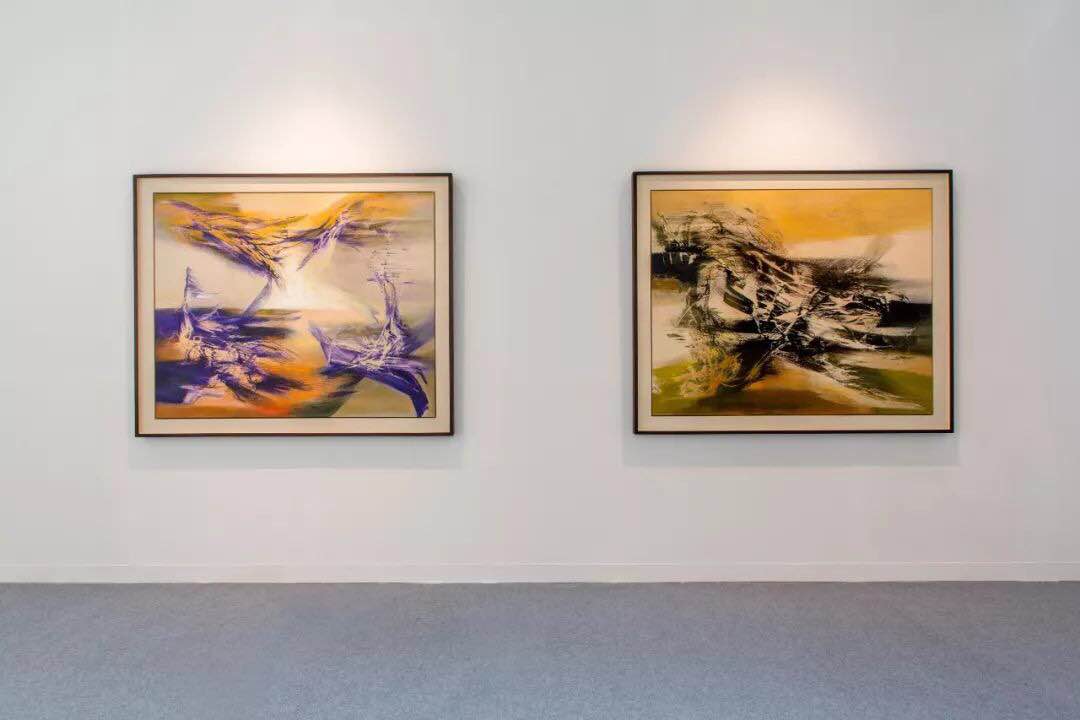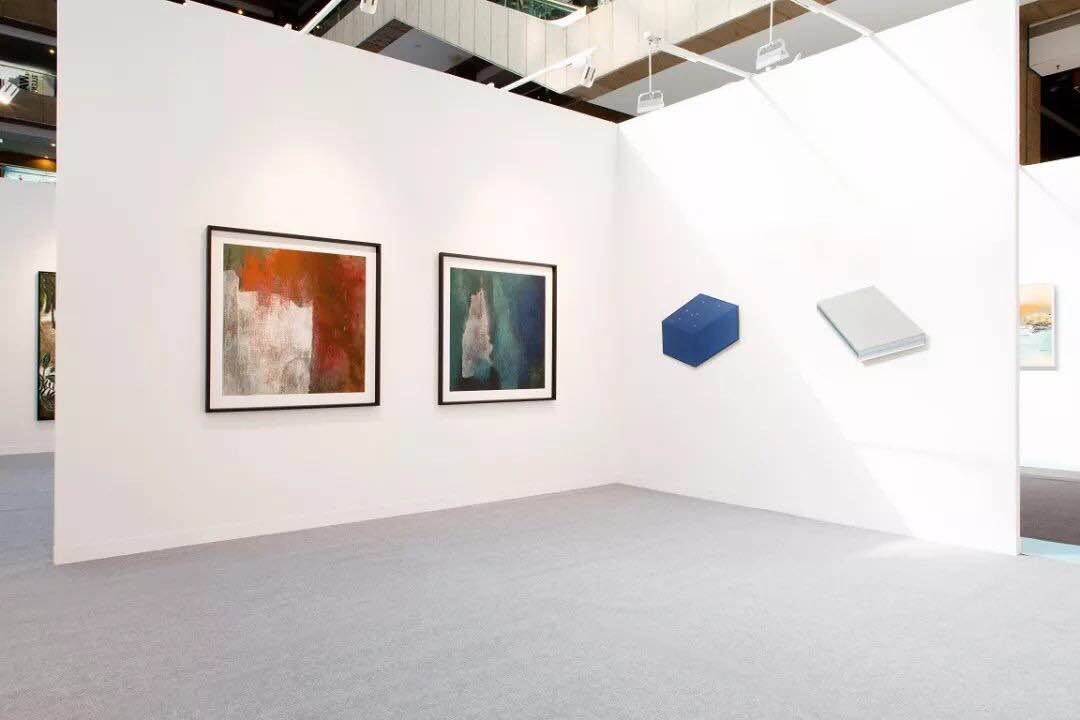Art Taipei 2018 | Asia Art Center | Booth G03

Art Taipei 2018 | Asia Art Center | Booth G03
Artist|DONG Shawhwei, GAO Xingjian, Handrio, HANG Chunhui, HONG Zhu An, JIANG Ji’an, LI Chen, Nobuo SEKINE, YANG Chihung
Date| Oct. 25-29, 2018
Venue|Taipei World Trade Center Hall 1 (No. 5, Section 5, Xinyi Road, Xinyi District, Taipei City, 110)
Booth|G03
Asia Art Center is pleased to announce the participation in Art Taipei 2018, the 25th anniversary of the art fair since its inauguration in 1993. For this edition, our exhibition will be divided into three themes: Debut of Ethereal Cloud series, Dialogue of Post-war Asian Abstraction, and Contemporary Chinese Expression, presenting a holistic overview of the creative diversity from our prominent artists. The Ethereal Cloud series by Li Chen marks the artist’s stylistic breakthrough from figurative sculpture toward spontaneous abstraction, expanding his interpretation of Eastern imagery into new grounds. In the Dialogue of Post-war Asian Abstraction, the works between Nobuo Sekine of Japan in contrast with Handrio of Southeast Asia construct an intriguing conversation that seduces the audience into a retrospective imagination of a traumatic time. Lastly, the Contemporary Eastern Expression section displays the rethinking of cultural identity in a structural context, where artists have grown dissatisfied with the mere modernization of traditional formality, while exploring through historical and global influences to uncover inspirations to redirect the discourse of contemporary Eastern art.
Debut of Ethereal Cloud series
Though singular works from the Ethereal Cloud series has been exhibited intermittently in previous exhibitions, at Art Taipei 2018, we will announce the official debut of the Ethereal Cloud by Li Chen, commencing the series as the artist’s aspiration to schematically overcome the existing limits of sculptural expressions. Since 2011, Li has contemplated on the manifestation of shaping the mercurial quality of matters, such as smoke, cloud, rain and mist through sculpture, and further allegorizing their physical uncertainty in form with the erratic characteristics of human nature. In this sense, natural phenomena become agencies of self-reflection; from the mountains rising toward the beaming sun, to the refreshing breeze that sweeps under the turning twilight, nature is as it is but our perception of it. This series highlights Li’s ideal of creating a form of sculptural abstraction through an Eastern imagery of interpreting nature and human, as well as their interchanging relationships. Thus, the works simultaneously manifest themselves in forms of nature and figures, imagery and poetics, consciousnesses and nonexistence.




Dialogue of Post-war Asian Abstraction
The Post-war era instigated a rich diversity of artistic creativity in the Asia Pacific region, the rapid development of social and cultural infrastructure inversely deconstructed the existing barriers between the global and regional, along with the old and new. Therefore, the exchange of ideas between the established and radical first surfaced as incidental collisions, yet later plotted into all out challenges. Under such chaos, new art forms emerged as artists searched for expressions to connect their respective traditional heritage with zeitgeist, formulating new vocabulary symbolic of their new self-recognized identities. Situated across each other geographically, Nobuo Sekine of Japan, a core founding member of Monoha, drew inspiration from the Zen philosophy to reduce matters into physical purity, emphasizing on the object’s intrinsic nature withdrawn from rationale. Whereas, Handrio of Southeast Asia integrated Modernist styles with regional craftsmanship and iconography, redefining the local spirit in a newly built global environment. This section establishes a dialogue between two distinctive areas during a turbulent time, where art became both a mental escape and inspirational source, marking a critical juncture in history that repivoted the future into an unknown pathing.

SEKINE Nobuo
Phase of Nothingness—SkinNo39 2016 Acrylic on canvas, wooden frame, plywood 61 x 50.8cm
Phase of Nothingness—SkinNo28 2016 Acrylic on canvas, wooden frame, plywood 127 x 101.6cm
Phase of Nothingness-Skin 074 2016 Acrylic on canvas, wooden frame, plywood 102×81.5cm

Handrio
Rhythm 1980 Oil on canvas 44x50cm
Composition II 1970 Oil on canvas 72x56cm
Composition III 1967 Oil on canvas 96×56.5cm
Still Life 1961 Oil on canvas 55.3x60cm
Contemporary Eastern Expression
Reimagining cultural identity has been a central theme in the discourse of contemporary Eastern art. Under the intricacy of globalization and modernization, artists are both intimidated by yet encouraged to explore into the opposite ends of cultural history and international trends, finding a common ground between the two polarities to establish personalized forms reflective of the epochal context. Contemporary Eastern art, thus, presents itself as a quest rather than formality, where the heterogeneousness of artistic expression is continuously extended by the multitude of experimentations to define self-recognition in a fluctuating construct. Subsequently, the artists displayed in this section formulate a network of possibilities, with each leading toward a new vision of reinventing the idea of Eastern expression within and beyond the global scope of contemporary art.

YANG Chihung
Illumination 2018 Acrylic on canvas 122x149cm
Imagery Within 2018 Acrylic on canvas 122x149cm

DONG Shawhwei
Crape Myrtle Flowers in Summer Courtyard Oil on canvas 194×224cm (Diptych)


Hong Zhu An
Warm Breeze 2018 Ink and color on xuan paper 104.3×104.3cm
Mountain Spring 2018 Ink and color on xuan paper 104.5×104.7cm
HANG Chunhui
No.1 Blue Pearl No.1 2017 Ink and color on paper, wood carving in relief 65.5x84cm
No.12 Message Obscured by Form-No.12 2018 Mixed Media 56x83cm